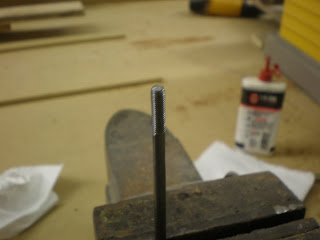I wanted to say thanks for all of the support this past year. 2010 has been great for Clay Conner Guitars! I know some of you have been following the progress on Facebook www.facebook.com/clayconnerguitars and here at the Blog, But for those of you who haven’t seen the posts, here are the highlights.
I am now working nearly full time at Guru Guitars www.guruguitarshop.com here in Raleigh NC. We have so much repair work to do, that I have to squeeze in growing my own business whenever there is time. It means that I have put in some long hours, but I’ve learned a lot. My guitar building has been steadily moving forward, and I’m really excited about all of the new instruments I’m turning out! I feel like I’m reaching a new level with my designs and skills. My guitars are getting a lot of attention in our shop.
I’ve been doing a lot of soul searching this year trying to decide which direction to take the business…what kind of business I want to run…what impact I want to make on my community and the planet etc. So far there have been a lot more questions than answers, but the idea of community has been coming back over and over again. So much so, that I’ve begun to think of my clients and everyone who I interact with as a big family. The Conner Guitars family! It’s been nice to think of this business as our business. I would like to start including you all a bit more in the process. So…one of you needs to meet with the accountant next week! Just kidding! All joking aside, I’ve been posting photos of my most recent guitar builds here at the blog. I plan to keep this up for 2011. People seem to be really interested in the process. It’s fun to let people behind the curtain so to speak. I have some ideas about a group project of sorts, but I need to flesh them out a bit before I announce it. Stay tuned!
In my mind, 2011 is all about going to the next level!...and that’s the plan! We’re working on updates to the website. We hope to have some t-shirts for sale fairly soon. We are trying really hard to make it to the Montreal guitar show in 2011. Beyond that…
I can’t wait to see what is coming and to welcome some new members to the Family! Thanks again for all of the love this past year! It keeps us going! I look forward to talking with you soon!
Clay
www.clayconnerguitars.com
www.projectsonthebench.blogspot.com
www.facebook.com/clayconnerguitars








































































